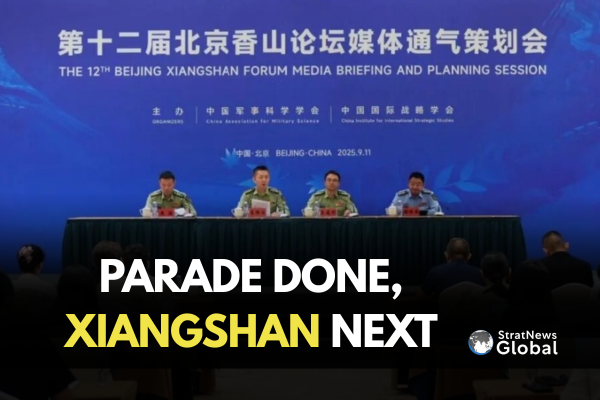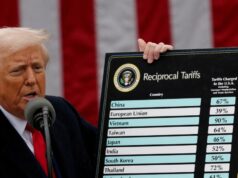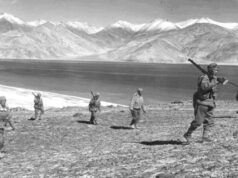Beijing will host representatives from over 100 countries, including defence officials, military leaders, academics and policy experts, for the 12th Xiangshan Forum, China’s premier platform for international security and defence dialogue from September 17.
The three-day Forum is often described as Beijing’s answer to the Shangri-La Dialogue in Singapore, designed to project Chinese perspectives on global security and provide an alternative to Western-led platforms.
Launched in 2006, the Forum has grown into Beijing’s main security platform, presenting China as a responsible power and security guarantor in Asia. Analysts see it as both a tool of soft power projection and a test of how countries view China’s regional role amid growing tensions. This year’s theme is “Jointly Safeguarding the International Order, Promoting Peace and Development.”
Anushka Saxena, a China analyst who follows the PLA closely, told StratNewsGlobal that the theme continues the pattern of earlier editions “Common Security, Lasting Peace” and “Promoting Peace for a Shared Future.” Taken together, she said, they reflect Beijing’s insecurities in the global order and its push for sovereign equality, non-interference, shared futures, and resistance to Western economic pressures.
Saxena noted that the programme includes four plenary and eight parallel sessions on global governance, Asia-Pacific security, safeguarding the post-WWII order, and “new forms of warfare,” with lessons drawn from Ukraine and Gaza. China will also highlight its wartime victory over Japan, linking history to politics.
What is missing this year, Saxena observed, is “youth groups or international organisations. Instead, there’s more focus on representatives from small and medium-sized states, conflict zones, and former senior officials showing Beijing’s aim to widen its influence among receptive countries.”
The Forum follows the September 3rd military parade, which showcased China’s latest weapons before visiting leaders.
“Clearly, the latest purges in the PLA, targeting the Eastern Theater Command, the PLA Rocket Force, and the Joint Logistics Support Force, tell us that the armed forces are far from achieving the kind of discipline and cleanliness necessary for procurement processes and combat efficiency to be top-notch.” said Saxena. “The parade obviously did its job by setting the context for this Forum, by pulling out the big guns amid the presence of many heads of state, and making a case that China has the strength and the willpower to secure its interests. What we are likely to see at Xiangshan is a relatively softer effort by senior Chinese military and political officials to seek cooperation and interoperability with defence-related attendees, but not necessarily the show of force we saw at the parade.”
The Forum also serves CPC political goals by promoting Xi Jinping’s Global Initiatives on Development, Security and Governance. For China, it is a way to project confidence and court smaller states, though the strategy has limits. Some officials may leave with mixed perceptions or feel pressured to align publicly with Beijing, she added.
Whether Xiangshan builds trust or deepens divides remains uncertain. But its growing scale underlines China’s determination to institutionalise its own brand of defence diplomacy even as the PLA wrestles with internal upheaval.
Research Associate at StratNewsGlobal, A keen observer of #China and Foreign Affairs. Writer, Weibo Trends, Analyst.
Twitter: @resham_sng





